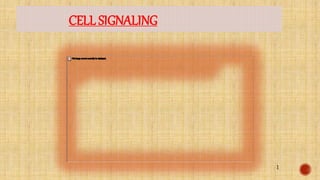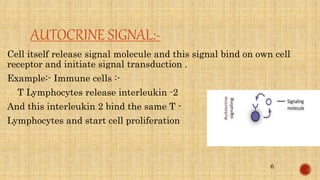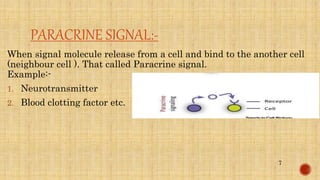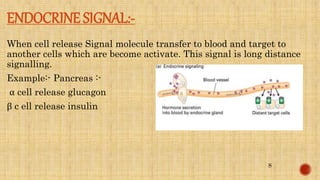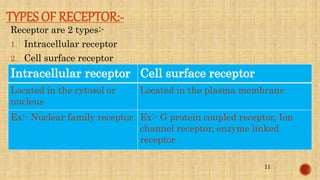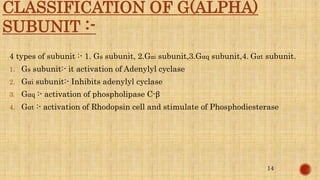Cell signaling involves communication between cells through signaling molecules. There are four types of cell signaling: autocrine, paracrine, endocrine, and juxtacrine. Signaling molecules can be non-polar or polar. There are three main types of cell surface receptors: G protein-coupled receptors, tyrosine kinase receptors, and ion channel receptors. G protein-coupled receptors activate intracellular signaling pathways through G proteins. Tyrosine kinase receptors dimerize and phosphorylate upon ligand binding to activate intracellular signaling. Ion channel receptors open or close ion channels to change the cell's membrane potential.
